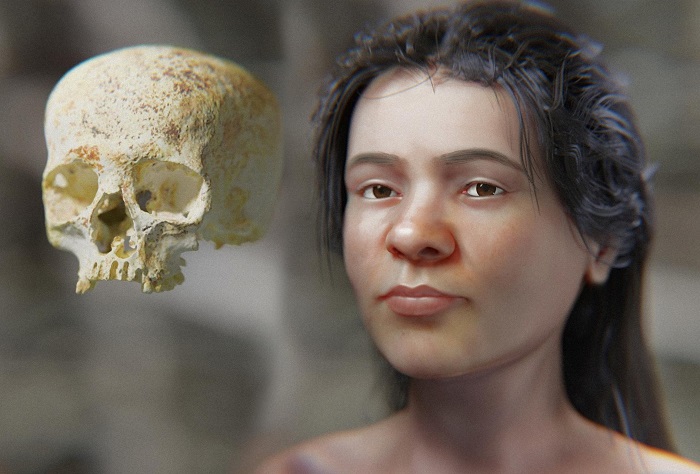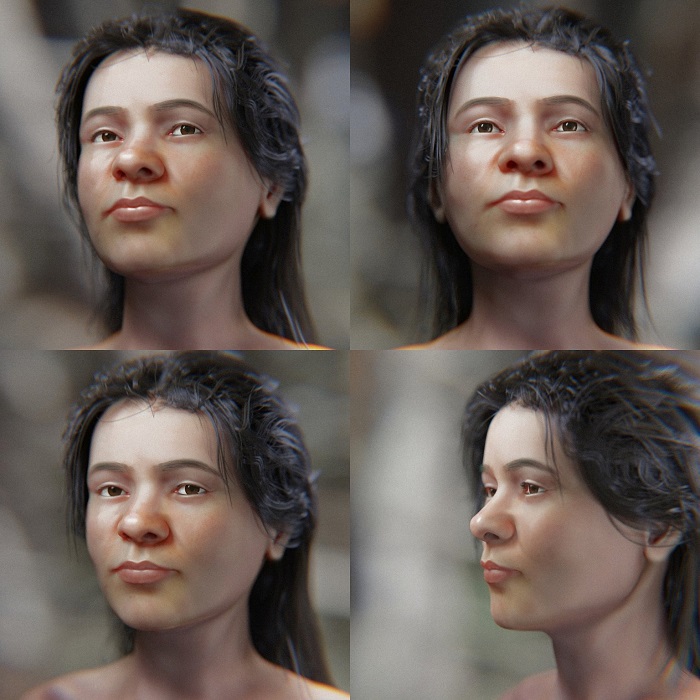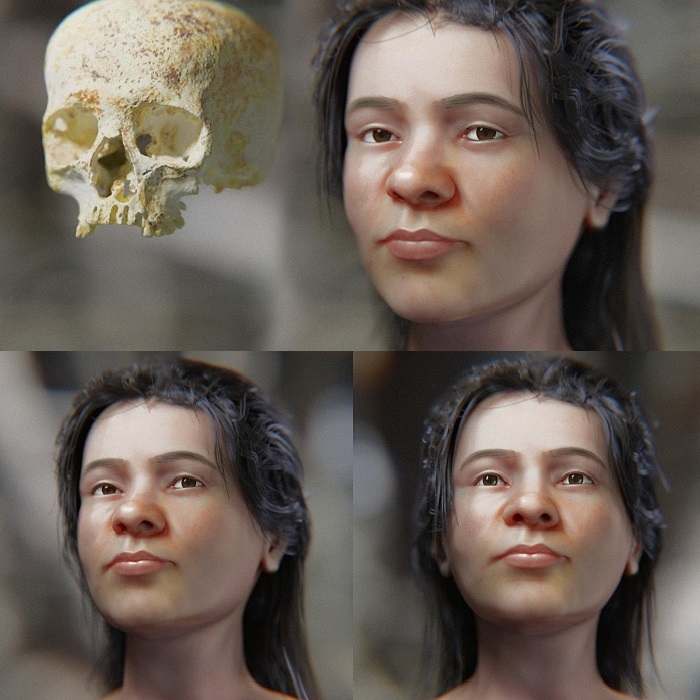Researchers created a 3D image of a Bronze Age woman who was likely part of Europe’s “Bell Beaker” culture.
During a road construction project in Scotland in 1987, workers unexpectedly discovered the interment of a female from the Bronze Age. The cist, a type of stony, coffin-like tomb, was found to contain her skeletal remains as well as a short-necked pottery beaker, a cow bone shard, and tiny fragments of flint.

The Achavanich Beaker Burial in northern Scotland became known among archaeologists and the public alike. Little was known about the woman, whom researchers named “Ava”, other than from anthropological analysis. She was somewhere between 18 and 25 at the time of her death, and her tibia (shinbone) measurements suggested that she was tall, approximately 5 feet, 7 inches (1.71 meters), according to a study that was published online on June 22nd.
Based on her grave goods, it’s possible that Ava was part of the Bronze Age “Bell Beaker” culture, which was common in Europe during this time period and known for its distinctively round pottery drinking vessels.
Now, a new image offers a glimpse of what this mystery woman might have looked like.
The researchers used existing CT scans of the 3,800-year-old skull in order to create a 3D facial approximation of Ava. Unfortunately, the cranium was missing a mandible or lower jaw, so the team drew on CT scans of living donor individuals in order to complete the final image, as the study states.

“Thanks to anatomical, statistical and logical data, it was possible to reconstruct” her face even without the mandible, study author Cícero Moraes, a Brazilian graphics expert declared in an interview. He further elaborated that a combination of soft tissue thickness markers, used to indicate the limits of the skin, was utilized to trace the profile of the face.
From there, the team performed an “anatomical deformation” of the virtual donor “that is adjusted until the donor’s skull converts to the skull of Ava,” Moraes said, “causing the skin to follow the deformation, resulting in a face compatible with the approximated individual.”
In 2016, an analysis of Ava’s likeness revealed her with a light complexion, blonde hair, and blue eyes. However, a different facial approximation of Ava in 2018 used her DNA to determine that she more likely had brown eyes and black hair, and that “her skin (was) slightly darker than today’s Scots’,” the researchers wrote in the new study.
The researchers hypothesized that her stature and facial characteristics could have made her quite striking during the era.

